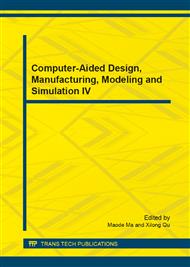p.71
p.77
p.81
p.86
p.93
p.98
p.103
p.108
p.114
Numerical Analysis and Research on the Profile Bending
Abstract:
This paper establishes a finite element model to analyze the effect of different loading modes and technical parameters on quality of profile bending molding. This paper firstly gives a short introduction of the technique, basic principles and loading modes of profile stretch molding. The process of aluminum stretch molding and the snapping back phenomenon are then simulated by the finite element model. The effect of different loading modes and technical parameters on quality of profile bending molding is also analyzed. Simulations results indicate that different loading modes and technical parameters have significant influence on the quality of the profile bending molding.
Info:
Periodical:
Pages:
93-97
Citation:
Online since:
October 2014
Authors:
Keywords:
Price:
Сopyright:
© 2014 Trans Tech Publications Ltd. All Rights Reserved
Share:
Citation:


